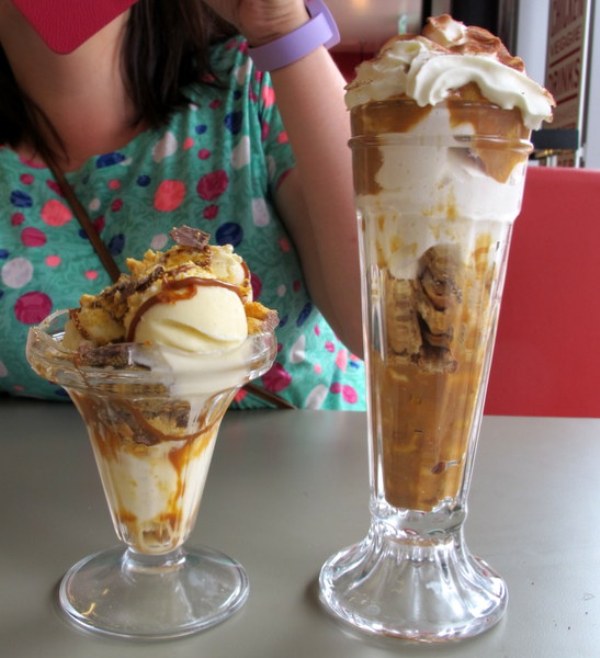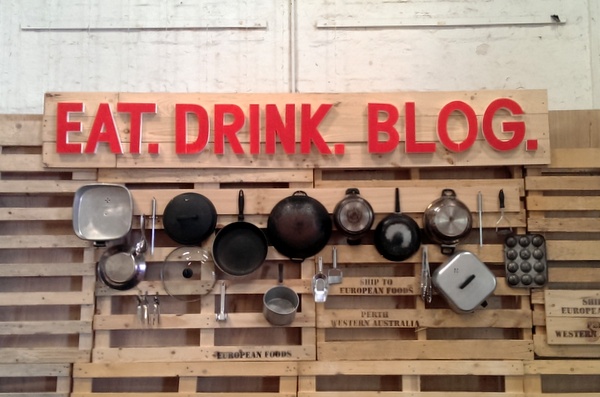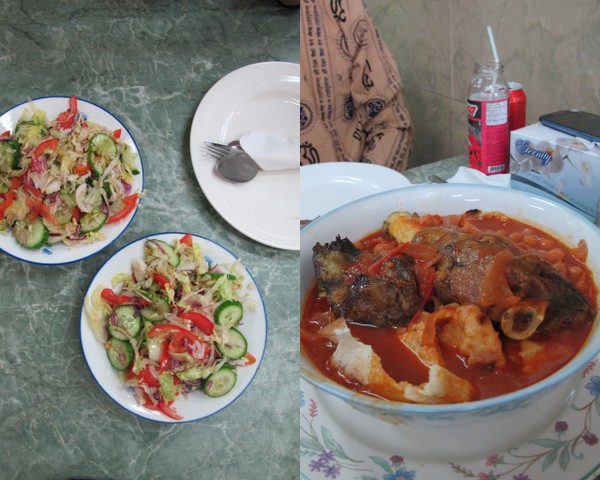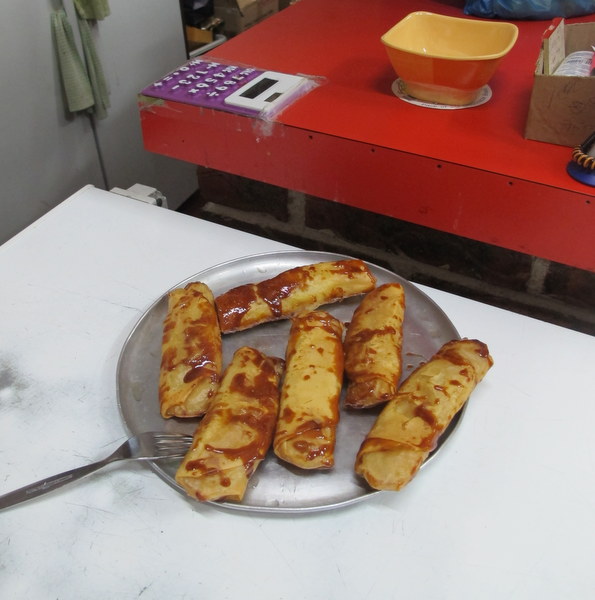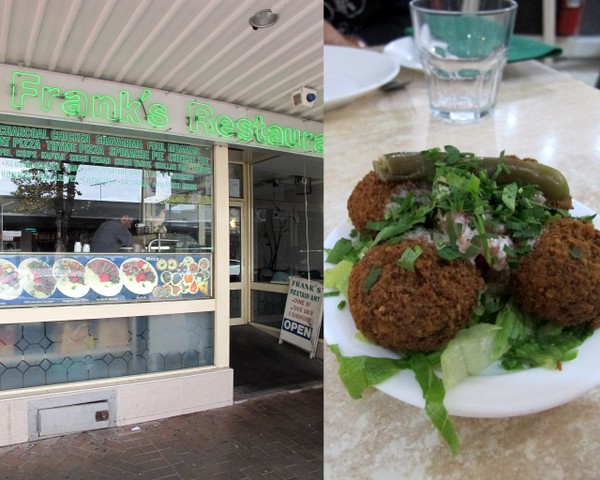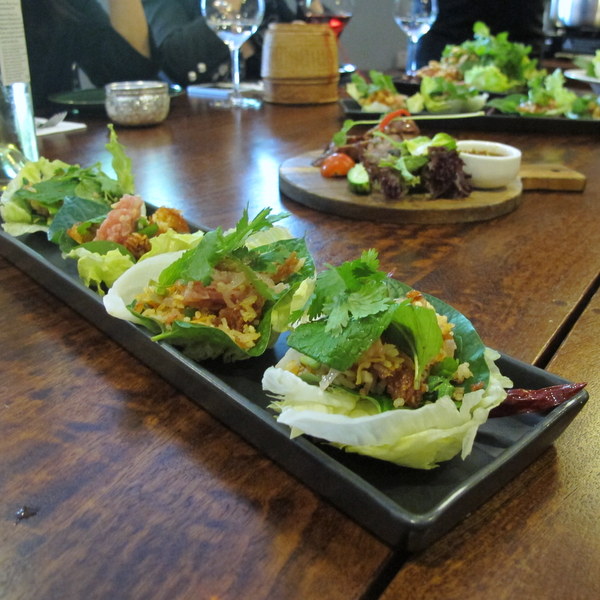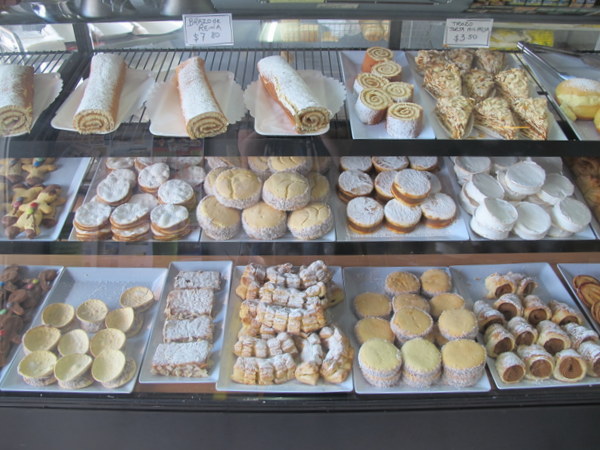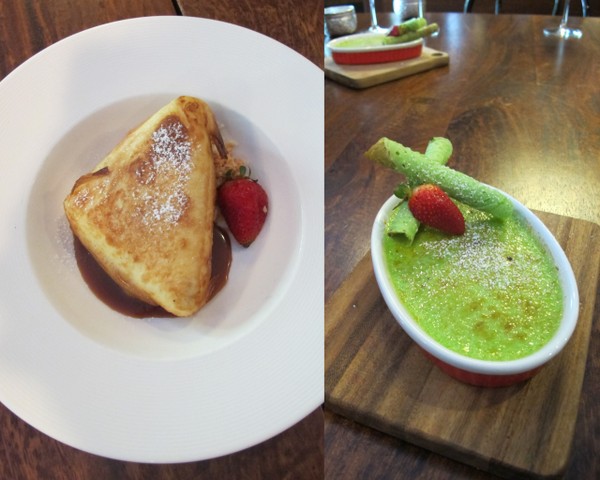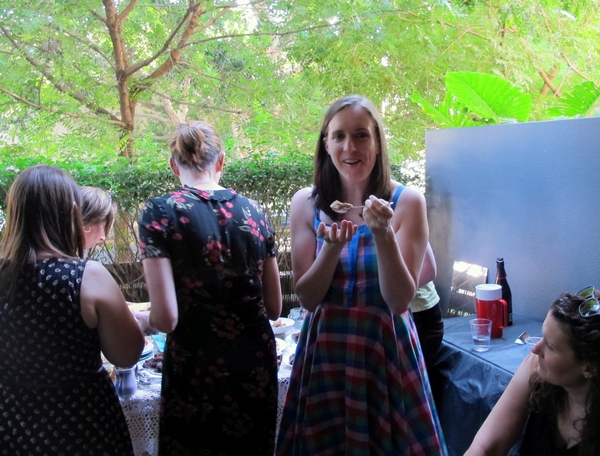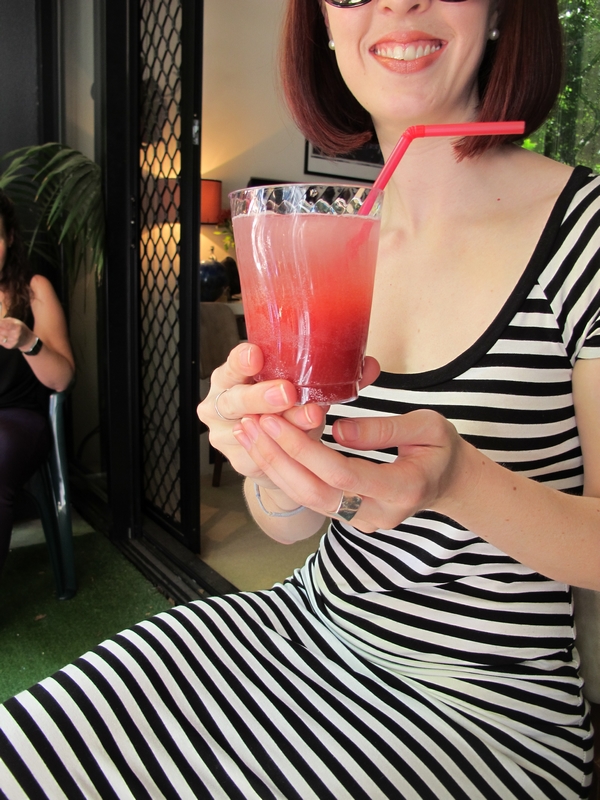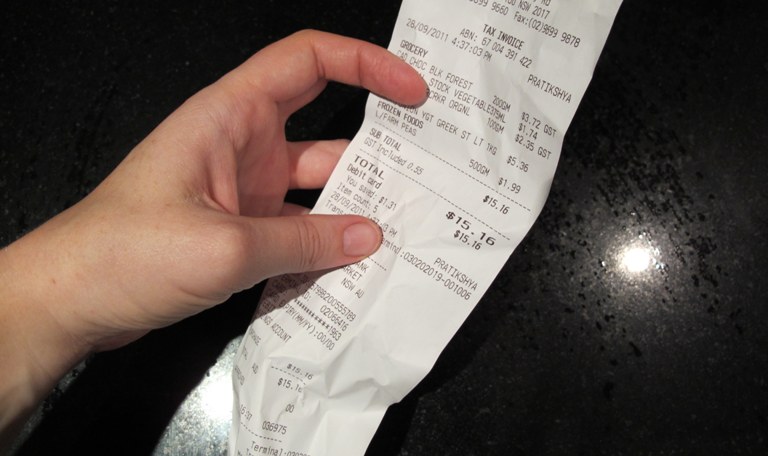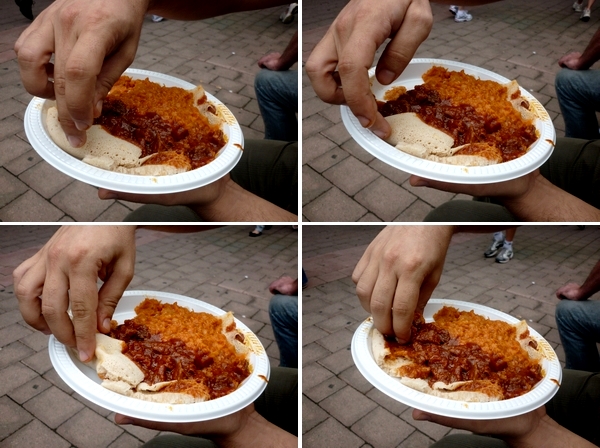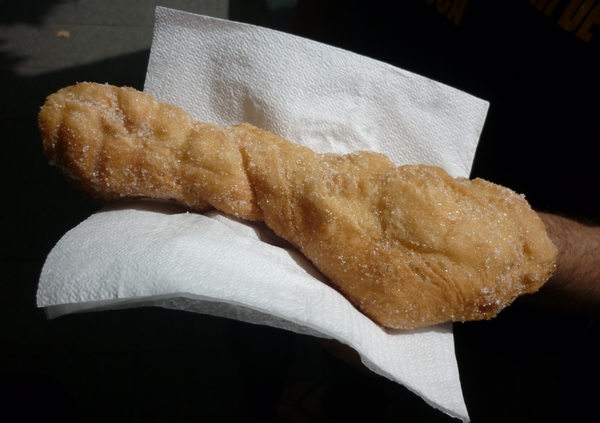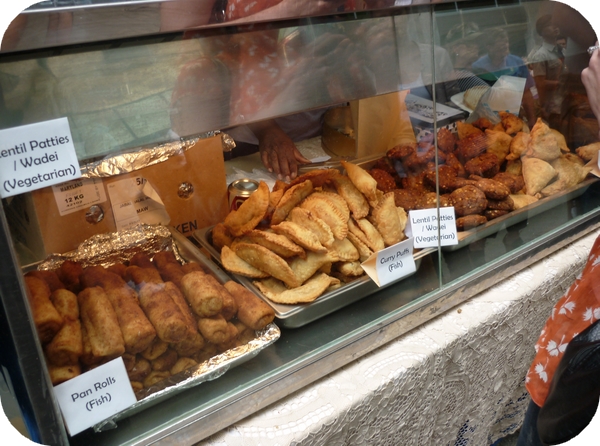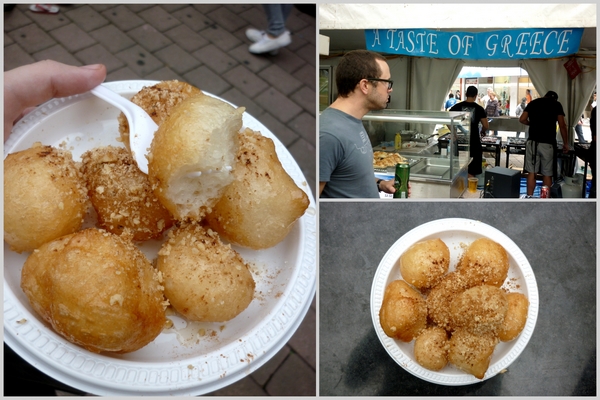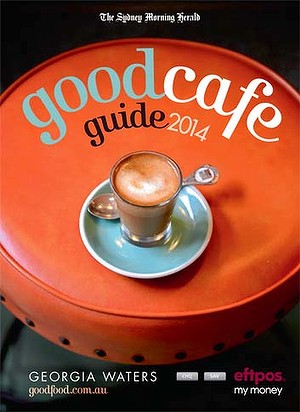The Hype
For the ‘I quit sugar’ movement, sugar is an insidious poison liberally and sneakily added to processed foods, rotting our teeth and making us all fat. What’s more, it apparently as addictive as cocaine or even heroin.
The Beef
Seem exaggerated? It is. But besides the hyperbole and lack of concrete scientific evidence to back it up, my main beef with the #iqs movement is that they don’t actually quit sugar at all. They quit fructose. ‘I quit fructose’ doesn’t quite have the same ring to it, but iqs-ers never let the truth get in the way of a good hashtag. Because wtf is #iqf? Our #iqs chums really believe that fructose is poison, meaning that for them, it’s preferable to eat a half a cup of rice malt syrup to an apple, which seems insane.
The Fine Print
Is fructose poisonous? Fructose (not high fructose corn syrup) occurs naturally in fruit, but it is also present in many other foods; table sugar or caster sugar, for example, is 50% sucrose and 50% fructose. Fructose also occurs in high levels in many processed foods such as fruit juice (with juice you get all of the sugar, all of the calories and none of the fibre). Fructose may or may not be a problem for most of us (i.e. those of us without a sensitivity or allergy to it); the jury’s still out. Experts mostly agree that sugar is sugar, and that excessive sugar consumption does contribute to obesity and ill health. Substitutions for fructose such as rice malt syrup, the darling of the #iqs baking scene has an incredibly high glycemic index and a high glycemic load, higher than that of fructose or caster sugar. I question whether the spike in blood sugar caused by a spoonful of rice malt syrup (sugar) would be any better for you than that from a spoonful of golden syrup, which has the highest calorie-to-liquid ratio of all the syrups (and consequently is also my favourite of all syrups).
The Verdict
It would be so much simpler if we could just point the finger at fructose, or even sugar, and be done with it. But being fit and healthy is down to so many more factors than a specific kind of sugar. It’s true that sugar has overall been found to be quite addictive, blood sugar spikes are not good for you, and there is added sugar (and salt and god knows what else) in most processed foods. Obviously the food industry would love to have us believe that sugar ‘in moderation’ is fine, and let’s not worry too much about what ‘moderation’ means. But the ‘sneakiness’ of ‘hiding’ sugar in foods is not itself an argument for cutting out sugar or fructose from our diets.
So wtf should I do?
Sugar has been linked to obesity for the simple reason that sugar is energy; it is incredibly high in calories/kilojoules. It is also a problem because we often don’t take it into account day-to-day – bottled fruit juice, for example, has the same amount of sugar as coca cola, but we generally consider it ‘healthy’ and therefor ‘not fattening’, forgetting that ‘healthy’ foods can be incredibly high in calories; the fact that a food may be beneficial to your health tells you nothing about its caloric content whatsoever. Limiting or even cutting out added sugar completely can even out energy rushes and mood swings so that we may find we ‘feel better’ when we limit or eliminate it.
Sugar can be fun, it can be delicious, it can be addictive, it can be a lot of things, but it isn’t poison. So take the I quit sugar movement’s advice, or any nutritional advice from unqualified ‘experts’ (including me) with a grain of sugar. While it’s true we’ve overlooked the surreptitious sugar-ladening of our food for far too long, the solution is not to whip up a batch of rice-malt-syrup-and-ground-date-sweet-potato-brownies and scoff the whole pan. If you want to cut sugar or even just get a better handle on how much sugar you’re eating, then ditch highly processed foods and the baking altogether. It is really that simple.
Someone finally said it. Maybe, we’re doing it wrong. But perhaps not in the way that we think…
Bloggers = mainstream media
At this year’s Eat. Drink. Blog. conference in Perth, one of the highlights for me was Thang Ngo’s presentation on mobile and the future of blogging. In it, he warned us that if we’re not careful, bloggers could be dethroned by a more tech, mobile and analytics-savvy crew. He pointed out that our success, whether measured by google rankings, page views or the less tangible ‘relevance’, is in many ways a happy accident, whereby traditional media dropped the ball – they got online too slowly and we were already there. But complacency and failure to move with the times could leave us straggling behind.
Every day, it seems we are becoming more and more like traditional media, and they are becoming more and more like us. Could punchy, short, media-rich content save us? Certainly it would drive traffic and increase unique views. And then?
There’s more to blogging than numbers
As bloggers, what’s the aim of the game? Is it to be seen by as many eyes as possible? Of course if we write, we want to be read, so it makes sense to know how to ‘be seen’, but as I write this, the top story on News.com.au is ‘Box Office Bombs: the 15 worst movies in film history’, so clearly numbers are not all there is to blogging.
Saying ‘no’ to PRs
Then something significant happened. For the first time since I first attended Eat. Drink. Blog in 2011, somebody got up and talked about working with PR companies and said something other than ‘just do what feels right to you’ or ‘full disclosure’.
Phil Lees, the blogger behind ‘last appetite’ and Social Media Manager for Tourism Victoria, said that in his opinion, food bloggers shouldn’t write sponsored posts, because sponsorship influences the kinds of things they write about, and that will influence their readers.
This was hardly revolutionary, but all hell broke loose in our little corner of the twitterverse. As Phil himself tweeted:
You are an expert
Let me put it this way. PRs contact you because you are an SME; a subject matter expert. You are an ‘influencer’, with a strong brand. But how did you become an SME, how did you build that ‘brand’? Probably through hard work and dedication. Probably through your unique voice. Probably because you were good at finding something or saying something or doing something in a way that others weren’t. In a nutshell, you knew something they didn’t, and you were willing to share it.
So you’re approached by a PR company, and they basically want to co-opt your brand, grab some reflected glow from you SME status. They offer you whatever they offer you to get you to say something about what they are trying to sell. There is nothing wrong with this, but there is also nothing right with it.
Your blog is your space
As Erika wisely said in her recent post, your blog is your blog much like your home is you home. If someone wants to provide you with a product or experience that you wouldn’t otherwise be interested in and you wouldn’t recommend, your rejection of their offer should be a forgone conclusion. And if you do write sponsored content, one thing that you can never say is “I write what I want, I don’t let anyone else influence my content.” That’s impossible. That’s impossible anyway, none of us are un-influance-able. But it’s certainly impossible if you’re writing sponsored content.
WTF does that mean?
I’m not saying that if you do PR posts, you are an idiot or your readers are idiots; that you say you enjoyed x brand of cocoa and suddenly your readership is rushing out to buy it, and your blog becomes an value-less platform for product spruikers nationwide.
What I’m saying is, brands are paying to take up space in our ‘neighbourhood’, to be part of our conversation, a conversation they may have no right to be a part of. On a micro level, sure, you can do ‘what feels right to you’. On a macro level, a broader trend develops with outcomes we may not yet have anticipated. Brands may have presence and prominence and power that, frankly, they may not deserve.
Check out another presentation that blew my mind back in 2011, Journalist Simon Marnie on why authenticity and diversity of opinion is so important in blogging (apologies for the picture quality of the video).
embedded by Embedded Video
YouTube
I for one am rewriting my editorial policy this week.
I recently had the pleasure of being a guest of Noodlies and The Fairfield City Council for #fairfieldfeast, a food tour for food bloggers showcasing the Western Sydney suburb of Fairfield. All meals were free, and all meals were also, unequivocally, bloody amazing. As tomorrow is Fairfield’s ‘Culinary Carnivale’, I thought it was time to share my list of must-eats for the 2165 postcode.
Although less well known than its Viet-food-packed neighbour, Cabramatta, Fairfield is actually the most culturally diverse suburb in Australia, as a stroll around the restaurants and shops in the Fairfield ‘city’ show. Fairfield boasts Iraqi, Afghani, Chilean, Lebanese, and Lao cuisines, just to name a few.
From the city, it’s a 45 minute train trip, and everything delicious is right by the station, making for a totally walkable multicultural feast. For me, #fairfieldfeast was like eating Christmas lunch three times at six culturally diverse tables. I enjoyed every single bite.
Here are ten ace fairfield eats from the places Thang, Mel, Simon, Josie, Lee Tran, Suzi and Cindy got to visit, so you can have your own little #fairfieldfeast.
1. Arabic bread from the Afghan and Arab Bakery
Crisp on the outside, pillowy-soft within, and only 80 cents a piece to boot. What’s not to like about this freshly baked bread? It’s perfect for soaking up any soupy, dippy or saucy goodness from the bottom of your bowl.
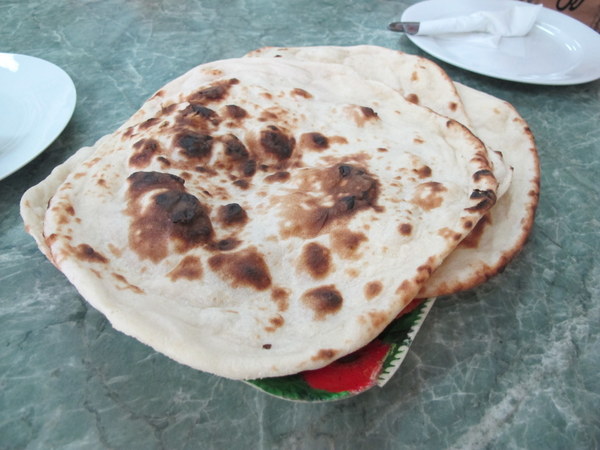
2. Chicken in adobo at Sans Rival (Mykababayan) Filipino Grocer
Mykababayan change their dishes regularly but the Adobe chicken is usually on offer. Moist and tender with a subtle soy/vinegar marinade, I was pretty impressed with my first taste of this well-known filipino dish.
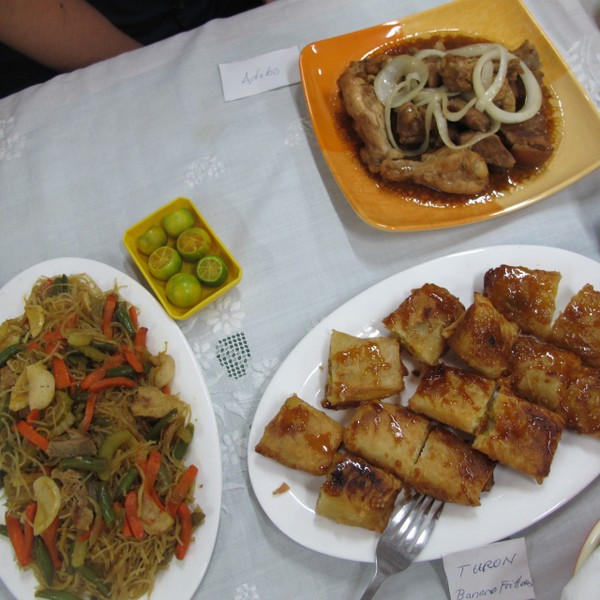
3. Chacarero y Palta at La Paula
It’s a rare day when I come to La Paula and don’t order this combo of la Paula’s own soft buns, rich mayo, fresh tomato, pickled green beans, generous slather of avocado and tender grilled beef strips. This sambo makes most burgers out there look like a joke.
4. Bread stew and crunchy salad, Al-Dhiaffah Al-Iraqi Restaurant
This slow-cooked stew is rich and tamatoey, the lamb almost falling off the bone. The strips of arabic bread soaking in the stew give the whole thing a soft, chewy texture, and the fresh tangy salad, which seems to accompany whatever you order, is a nice contrast.
5. Banana and Jackfruit Fritters at Sans Rival (Mykababayan) Filipino Grocer
There was nothing we didn’t like at Mykababayan, but the standout for me were these crispy parcels filled with soft sweet fruit and drizzled with solid strands of toffee.
6. Felafel and Toum at Frank’s Restaurant
This is felafel at its absolute best; crunchy and delicious with vibrant green innards, slathered in Frank’s special tahini sauce. Dunk it in Frank’s homemade toum (lashings of which are sold daily), the only ingredients of which are garlic, oil and salt. A better garlicky snack would be pretty hard to come by.
6. Lao Sausage and Nem khao at Green Peppercorn
My mouth *literally* does not understand either of these dishes. The lao sausage is made by hand and is packed with lemongrass, sure, but it is granular and complex in flavour in a way I just can describe. The Nem Khao had chunks of crunchy fried rice balls as well as fresh herbs and fermented pork. I think there’s coconut in there as well. Highly addictive.
9. Torta de Tres Leches at La Paula
Tres leches means ‘three milks’ in spanish and La Paula’s version is a sandwiched sponge with whipped cream and dulce de leche in the middle, iced with meringue and soaked in evaporated and condensed milk. It’s extra delicious if you either dunk it in coffee or pour a little coffee over it. trust me.
10. Pandan Creme Brulee and Deep Fried Ice cream at Green Peppercorn
Even though these were the last two dishes we ate on this massive food tour, I could not stop eating them. The pandan creme brulee was liquid smooth and coconutty with a crisp top, while the ice cream, wrapped in filo pastry, deep fried and paired with a rich caramel sauce never seemed to melt.
A huge, huge thank you to Thang Ngo and to Fairfield City Council for having me along to #fairfieldfeast.
Which is your favourite suburb for a multicultural feast?
There was a time not long ago (pre-Corridor Kitchen) when I wondered if I had lost the ability to come up with ideas. Seems crazyhorse now, but not all that much was going on and it seemed like not all that much ever would be. It’s obvious to me now that ideas don’t come from nowhere; creativity isn’t bred in a vacuum. Ideas spawn ideas spawn ideas, until one day you look at your calendar and there is literally not a spare space left. And ideas often involve more than just you and your brain; they involve other people.
When I met up with Katie at The Rag Land what seems like aaaaages ago (but really it was only January), it was a lot like when Elise told me her idea for a cookbook and The Potluck Club was born. It was a meeting of the minds in the truest sense, both of us at a loose end, talking about what we could do, what we could make, together. Because that’s all creativity really is – doing and making things.
We talked about so many things over those few weeks, but we kept coming back to the idea of gathering together, and of people (not brands or buildings or money or even food) being the essence of a good party. And so Pigeonhole Gatherings was born, Swah designed us the perfect logo, and the rest is history.
So what are we? Well, I’ll quote direct from Katie for this. ‘Pigeonhole Gatherings runs and promotes small, local, low-cost and free events centred around arts, culture, food and most of all, people. It’s already awesome and we are so excited!’ (Italics all mine). In a nutshell, we’re all about people coming together to do stuff. We fill the spaces that aren’t used 24/7. We could host a dinner in a local cafe. Or a wine tasting in the park. Or a life drawing class in an old warehouse. Or a how-to-sew workshop in a local high school. Or, our first gathering last week, a potluck at my house.
So last weekend, a bunch of people (orright, mostly food bloggers, but food bloggers are people too) met to share a meal in the kind of space we don’t see each other in all that often. It was an amazing day, and the food was more delicious than I ever could have hoped. We donated spare change to The Stephanie Alexander Kitchen Garden Foundation, and I think everyone had a grand time. But what struck me most, as we squished onto my sunny balcony and ate ourselves silly, was just how little was actually needed to make this happen, and how little inconvenience 10-or-so people gathering in my house caused. It was an absolute joy, and reminded me of why I started Corridor Kitchen in the first place – neccesity is the mother of invention. If I can cook a fabulous meal in my mouldy old corridor, the possibilities are pretty limitless. This is the next step.
Huge thanks to everyone who came out and contributed, including food bloggers Swah, Tara, Megan, Flick, Hayley and JJ.
And our next event? Yes, it is food related; a charity cake stall/bake sale, date and venue to be decided.
And yes, Pigeonhole Gatherings is all about ideas. So join us on Google+ and Facebook and share yours. And share your gatherings!
Every year I make a pilgrimage to our nation’s capital for The National Multicultural Festival, and every year I am oh so glad I did. This year it ran from the 8th to the 10th of February, and with 50 new stalls added to the lineup, I was curious to see where they’d fit them all…
Our first stop was LSR 23, Lonsdale Street Roasters’ second café. 23 Lonsdale Street houses their roastery, has a reduced menu and an order and pay at the counter policy. They also do something I will never for the life of me understand- make you collect your own have-in coffees. In the time it takes them to yell ‘Fabio’ eleventeen times, they really coulda just brought you the damn coffee. But hey, whatever gets you caffeinated, right?
My assembled companions for our initial Multicultural feast included, from left to right, my bro+chum, fake Sis-in-Law+chum, and partner+chum, as per usual, all stylishly attired and with grimaces (and forks) in hand.
At the Multicultural Festival, it’s always a tough call as to where to start, because you know there’s only so much room in your belly to eat your way around the globe. As it was noonish, we were more than peckish, and hit up the Peruvian stall post haste. Thank god we did. A new addition to the festival, they were serving up mashed potato, stuffed with chicken, boiled eggs and spices (similar to a tamale) deep fried and slathered in salsa. Just incredible- crisp on the outside, fluffy on the inside, with a mild vinegar-and-chilli zing from the salsa. This was my favourite dish of the festival.
We were severly tempted by the yeeros (pictured), considered joining the miles-long queue at the Gloria’s stall for grilled sardinhas (sardines), an, as always, lingered longingly at the Ethiopian stall watching people mop up their stew with pillowy injera. But we passed them all by, meeting up with Canberra coffeehead Barrista Barrister to try something new.
I’d never had Samoan food until this plate. I have to say that although it looks ugly as sin, it is also delicious as sin. Roast pork with plenty of crackling, gravy, samoan chop suey (stir-fried noodles), taro cooked in coconut milk and mashed purple kumara make for a veritable starch-fest. I think we were all glad we shared this between three.
We were intrigued by the pickles on sticks on offer at the German stall, but as we were going easy on the alcohol and the pickles came with beer, sadly, it wasn’t to be.
OK so I have to admit we hit up the famed loukoumades stall twice, but in my defense, it was because the first lot weren’t dark and crispy enough. The second lot, we shared with my mum, so I guess we had parental permission. Yeasty puffs of deep-fried dough squirted with honey and dusted with cinnamon and crushed walnuts, that second plate really hit the spot.
Another favourite of ours is the Bhutanese stall. We grabbed some momo, cheese-laden veggies, meat curry, rice and chilli sauce and scoffed away like there was no tomorrow. Their combo plate is one of the best value dishes on offer, and the people manning the store are lovely to boot.
If you’ve never been to The National Multicultural Festival (or even if you have), I highly recommend it, if only for the food. My year of eating just wouldn’t be complete without it.
Past posts:
The National Multicultural Festival 2012
The National Multicultural Festival 2011
If you follow the cyclists, you’ll find a good cafe. Turns out those fixies mounted on the wall in your local trendy coffee house aren’t always just for decoration. I challenge you to find somewhere in this wide brown land more cycle friendly than our Nation’s Capital. Canberra has almost as many bike paths as there are roads and so it stands to reason there has to be more than one place to find a good macch. And so early one Canberra morning we rose with the cyclists and followed them to Farmer’s Daughter.
Farmer’s Daughter is at the Yarralumla shops, an old and well-off suburb 5 minutes west of Parliament house. Yeah, like that’s how Canberrans give directions. Anyway, It’s just after 9:00am when we arrive, so we have our pick of tables. By 9:45 the place is pretty much full and the wait is long for those who want a 10:00 or 11:00 am breakky.
The menus are on cute little clipboards and it’s one of those occasions where everything sounds enticing; enough adjectives to intrigue but not so many as to overwhelm. I consider the french toast, described as ‘soft toasted brioche slices served with fresh summer berries and lavender cream’, but I can never quite go past a savoury brunch and so I choose the fried egg bruschetta with romesco. Breakfast dishes hover around the $16 mark, so you know if it’s less than perfect I’ll be sending it back.
The coffee menu is why we’re really here, as farmer’s Daughter serve cold drip and syphon as well as espresso. What I like about their specialty coffee menu is that it’s all written down as part of the normal menu, not on a blackboard or just as something you have to know to ask for. I like that they’ve described what each method involves and tastes like on their menu, leaving you to order the drink, ask questions about it, or not. I know most people drink espresso but I’m sure many are curious to have a go at siphon or cold drip or pourover, but aren’t quite sure where to begin. All too often specialty, back-to-basics coffee can be quite intimidating for the unnanitiated coffee drinker, but not so at Farmer’s Daughter, so assuming that hipster coffee places actually *want* a bigger uptake of these alternacoffees, this is a smart move.
Between the four of us we order a macchiatto (guess who?), a picollo latte, a siphon coffee and a fire and ice espresso shot, which is two shots of a single origin espresso, one in a frozen glass and one in a room temperature glass. This is to show of the differing flavours at different temperatures, as is the Siphon, which you drink cup by cup from hot to lukewarm to appreciate its subtle, tea-like flavour, but also how that flavour changes as the temperature drops. It’s actually quite fun try both of these coffee methods, and there’s nothing patronising or pretentious about the way they’ve each been presented.
The fried egg bruschetta is great, with runny yolks and firm-enough whites, although the romesco has the quality of those cashew and capsicum deli dips – it tastes store bought, although I can’t say for sure. Who cares, it’s delish. The other dishes on our table are equally tasty, from the poached eggs with ‘finishing touches’ to the the ‘no ordinary soldiers’, three toasts with a different topping for each: smoked salmon and crème fraîche on one, parmesan and rocket on another and the third with prosciutto and romesco.
Overall I’d say I enjoyed breakfast at Farmer’s Daughter, I even went back for a second macch (naughty), this time a single origin, the Rwanda Maraba III Sovu Cup of Excellence which is indeed both velvety and fusgy as the Campos website decrees. I will return, bright and early, to sip a syphon and investigate their menu further.
Farmer’s Daughter
27B Bentham St, Yarralumla
Yarralumla, ACT 2600
02 6281 2233
Monday- Saturday 7:00am – 3:00pm
They let their food go cold. They rock fancy SLRs. They tweet up a storm, posting photos of their on-trend lunches and they always know where to get a good feed. Here are five facts about food bloggers you may not know.
1. They hate food fads just as much as you do
Macarons. Masterchef. Those over-blogged ‘it’ restaurants. Food bloggers have been there, done that, or at least read it in their mile-long blogroll. At EatDrinkBlog, one food blogger admitted to me, in hushed tones ‘I don’t think macarons are that great, actually.’ I had another prominent food blogger email me to agree that Sydney’s recent night noodle markets were both overrated and lacking in noodles. Chances are your fave food blogger is as sick of hearing about Jamie’s Italian as you are…or soon will be.
2. They’re zeitgeisty, not trendy
Food bloggers will break the next big thing months before the more cautious mainstream media. By taking risks, readers feel they get the inside scoop and other bloggers can follow suit and put in their 2 cents. As a rule, food bloggers don’t blog an experience they’re not that enamoured with, unless it’s macarons, possibly served at the night noodle markets by one of the contestants of masterchef, so the initial buzz bloggers create is often well-deserved.
3. They work extremely hard at what they do
Blogging requires consistent effort, especially for big name bloggers or those who have successfully monetised their blogs. Once readers regularly stop by or start paying for content, it becomes even more important to provide consistent, quality stuff. Food bloggers know they have to bring their readers something fresh and new that they can’t find on their own. A full-time blogger may work around 15 hours a day, 6-7 days per week. I myself spend about 8-10 hours a week just to produce 1-2 posts.
4. They’re often not as tech-savvy as you might think
Bloggers aren’t all tech heads, nor are they all graphic designers. When figuring out how to do something tricky on their blogs, the default method? ‘Google it’. I’m really glad I’m not alone in this, as along with visiting forums, it’s the method I usually use. Another thing I’ll do is to get in contact with bloggers who have a feature on their blog I particularly like, and ask them where they got it. Food bloggers are usually more than happy to share their knowledge and help you out.
5. They’re not all trying to get published in mainstream media
It’s often assumed by those outside the blogging community that bloggers are trying to get published in a ‘real’ medium. For some, this may be the case – they may be after freelance writing jobs or book deals. But for many, blogging can be a hobby, or it can be a business, it can be just plain fun. I know for myself the motivation is producing something, publishing something myself.
The $35 Challenge, where we have just $35 to spend on a week’s worth of food and drink, is drawing to a close. And while it hasn’t been as hard as I thought, we are getting to the point where were actually running out of food. Or so it seems.
Eating last night’s dinner for lunch will be impossible tomorrow, because today, dinner is steak and mash. Discount rump steak that’s been sitting in the freezer for a week, waiting for this very day. The day when I can’t be arsed to chop more than a potato and some beans. But what of our tomorrow-lunch?
As usual, the answer is leftovers, but not in the way you’d think. This time, I’m taking all the disperate leftover bits and bobs we’ve accumulated over the week and making them into (hopefully) a tasty dish for tomorrow.
Here’s what I have to play with:
Crepe filling from day 1 (cottage cheese, spinach, dill)
A tiny bit of chicken pie filling that’s been in the freezer forever
Tomato sauce for the pizza we ate on day 5
To that I added:
The juice of a lemon
Green beans
A tin of butter beans
Spaghetti
Basically, I cooked the spaghetti and green beans, stirred everything else through it and bunged it in a container for tomorrow. It’s not the most incredible meal in the world, but it’ll have to do.
What about you? Do you ever throw all your leftovers together in this way?
For the first few years I lived out of home, I remember quite clearly my grocery budget – $35 a week. That number is burned into my brain. $35 after rent, bills, a weekly train ticket and whatever uni required that week. And that’s if nothing else came up. When you only have $35 to live on, essentials tend to fall by the wayside. In fact, they have to. This was my experience. I’d have a coffee once a week, and my aunt paid. I only went to bulk-billing doctors in my area, all of whom were overworked and uninspired. I barely exercised, except to rush between the places I needed to go. I didn’t buy shoes. I didn’t go to the dentist for 6 years. Eventually I dropped out of uni and went and worked fulltime in a cafe.
And if you think I was frittering away my money on trivial things, you’re wrong. I never ate in restaurants. Me and my housemate drank two beers a week together, and that’s only because our pub had a thing called ‘free beer Wednesday’, so that cost us all of $3.80 each. My Friday ‘treat’ was a $4.50 toasted sandwich at the uni tuckshop. For my 20th birthday, I treated myself to a new top, $15 at Myer.
What’s crazy is that I didn’t know that I was living in poverty.
I don’t remember those times as miserable, in fact, I remember them as a lot of fun. But when I look back on it now I’m amazed at my resourcefulness, I’m amazed at anyone’s resourcefulness at surviving on so little for so long. I’m also very thankful for the family and friends who kept me from going under- I don’t know where I would be without their help. Many people out there don’t have such support network, I have no idea how they struggle through each day.
This is not a hard luck story, but it is an example of what it’s like to live in poverty. And what’s worse it’s not uncommon. Approximately 2.2 million Australians live in poverty. That’s 11.1% of us without access to basic necessities like healthy food, dental care, transport, affordable housing and education. In a country of relative wealth, in stable economic times, I think we can all agree that is a disgrace.
But this is not about despair, it’s about action. It’s time to act to raise awareness rather than hiding our heads in the sand. That’s what we’re aiming to do with The $35 Challenge; experience poverty, raise awareness and raise money for a worthy charity, Ozharvest, who do so much for Australians in poverty.
I hope you will join us in the inaugural $35 Challenge, as we do our bit to raise awareness and funds in the fight against poverty. Every little bit helps.
We are told time and time again that one of the easiest ways to introduce people to new cultures if by feeding them, because wherever we go, whatever we do, we all need to eat. So it’s no surprise that the main focus of the 2011 National Multicultural Festival was food. I have to admit that although I was born in Canberra and lived there for the first 19 years of my life I’ve never been to the festival before. So I wasn’t sure exactly what to expect from it, probably something like the food festivals we have here in Sydney. I was pretty sure there’d be gozlëme, that’s for sure.
Last weekend my man and I were visiting Canberra for a friend’s birthday and she had concocted marvellous challenge- food golf. The idea was that we all had to dress in golfing outfits and prowl the festival, marking off various foods and drinks as we consumed them. Each item was worth various points and at the end we would tally up the scores and proclaim the winner.
I stuffed things up by being the only one who didn’t get a costume sorted, and as we entered the multicultural festival at 3pm on Saturday, the atmosphere was not dissimilar to that of a moshpit and I began to wonder how likely it was that we would complete our challenge. One of the things I always forget about Canberra, a city where comparatively little happens, is what it’s like to be in the thick of it when something DOES happen. With an event like this, there’s a huge turnout and it feels like everyone in Canberra is there. Apparently, this year the three day festival attracted 100 000 people on the Saturday alone! That’s as many as it usually attracts for the whole three days.
I was impressed with food line-up, which went well beyond the usual suspects. Of course there was gozlëme, as well as German, Greek, Lebanese, Indonesian, Spanish, Mexican and Indian food, but there was also an endless list of national cuisines you rarely see, from Ethiopian to Chilean, Fijian, Samoan, Sri Lankan, Bangladeshi, Serbian, Argentinean and Mauritian to name a few. It was nice not to come across the same stalls that rock up to every Sydney and Melbourne festival I have ever been to. A tapas or poffertjes stall has no place at the Hyde Park Noodle markets, for example, and I wish organisers would take a leaf out of the National Multicultural Festival’s book when they plan such events.
Even though we had a painstakingly prepared list of foods to ‘golf’ we made a beeline for the first Ethiopian stall we saw to grab a castle lager and some delicious injera topped with ‘sauces’, which I think is a good way to describe the way food in Ethiopia is eaten. The injera, a kind of crumpet-like sourdough pancake made of teff flour, is really the star of the show. We had it with a mild red lentil stew and a rich beef stew, with a pleasant heat from the berberé spices but not spicy per se. The injera was pleasantly sour and spongy- delicious!
Then I spied another cuisine not on our list- Philippino. I couldn’t go past a pillipit, a plaited Philippino donut dusted in sugar so my boyfriend ordered us one. He had to ask the stallholder 4 or 5 times because apparently pillipits are also known as shakoys so she had no idea what he was talking about! Unfortunately, the pillipit was not freshly made and was doughy and chewy – kind of like a day-old chain store pizza crust, so I photographed it and we threw it away, not willing to waste precious tummy space on sub-par food.
I was pretty stuffed at this point and needed a break but my boyfriend spied something intriguing at the Greek food stall. Again, Greece was not on our list but the Kokinisto, a meat and onion stew served with chips looked too good to pass up. I nabbed a couple of chips and a mouthful of stew and I’ve got to say it was pretty tasty but still not a patch on the Ethiopian beef stew.
What I really wanted was some Sri Lankan pan rolls or some kind of coconut based curry and that’s when we came across one of the two Sri Lankan stalls. I snapped a few shots of the fried treats on offer, as well as the Korean stall where they were cooking up some bulgogi beef and spicy chicken on large bbqs.
We decided it was time to offset the heat with some more beer and spotted a Spanish food tent selling tapas, beer and sangria towards the Canberra Theatre end of things. The offerings there looked delicious- tortilla de patatas, gambas al ajillo, chorizo and so forth and at pretty reasonable prices. We grabbed a couple of Cruzcampo beers, an easy drinking beer but it wasn’t as good as I remembered. I guess it’s because I wasn’t in Spain and it wasn’t fresh out of an ice-cold tap. Oh well.
We came back to the Greek stall where I had previously seen about 50 people lining up for Loukoumades, Greek doughnuts slathered in honey. I really wanted to get a picture of them being made but as I snapped away, I realised what I really wanted was a plate of these delicious puffs. Having never tried them and still disappointed by my stale pillipit, I joined the long queue which moved surprisingly quickly. The loukoumades were fried, slathered in honey, plated up and topped with cinnamon and walnuts, all for the grand total of $5! They were delicious- crisp on the outside and pillowy-soft in the centre, sweet and sticky with the crunch from the bitter nuts offsetting the warming cinnamon. I have to admit I had more than my fair share.
I noticed that there was a distinct lack of those fenced off little pig pens that have become the norm at NSW events serving alcohol. In NSW, public events require allocated, fenced off alcohol vending/consumption sectors, or else the whole event needs to be fenced off. The ACT has slightly different liquor laws to NSW and as such, although there was no glass allowed (all beers had to be poured into plastic cups), there was definitely a less restricted vibe, although still a police presence. The atmosphere was insanely busy and although it was quite hot and people were drinking, everyone was very laid-back and patient, even with all the lines and crowds.
Finally, we saw a guy weaving his way through the crowd with a shopping trolley full of our least favourite kind of beer- Quilmes. We figured he’s be heading to the Argentinean stall, which we were yet to discover so we followed (stalked?) along after him. The poor guy had a hell of a time getting through the crowd and finally stopped at a Chilean stall selling completos and beer. A completo is a hot dog with the lot (complete) and I had to get one. It had mashed avocado, fried onions, mayo and American mustard and I added pebre, a Chilean salad/salsa. Disgustingly delicious. They also had a selection of Chilean, Argentinean and Mexican beers but none were cold yet as they’d only just been unloaded so we headed back to the Ethiopian stall and grabbed another beer and some Indonesian satay sticks from the Indo Café stall. Tender and charred, they were a perfect finish to a 5 hour meal. All in all it was a grand day, although we had no chance of winning food golf.
So, dear reader, what’s you fave festival food?
About me
 Sharing easy recipes, hunting down the best coffee. Honest accounts, nothing too serious. Read more...
Sharing easy recipes, hunting down the best coffee. Honest accounts, nothing too serious. Read more...Recent Posts
- Aerpress means no more shit #travelcoffee and #workcoffee
- Why I write and four ace bloggers who do it better
- The five best things I ate in London
- Shoreditch is awesome, airports are not
- I quit sugar? Do I bollocks.
- Cubao Street Food, Alexandria
- The Reformatory Caffeine Lab, Surry Hills
- Brewtown Newtown
- Stay caffeinated over Christmas
- Gumption by Coffee Alchemy, Sydney CBD
Popular posts this month…
 Sparkling Long Black posted on May 10, 2011
Sparkling Long Black posted on May 10, 2011  Review – Philips Saeco Intelia posted on January 10, 2012
Review – Philips Saeco Intelia posted on January 10, 2012  Kosher Whole Orange Cake posted on July 5, 2011
Kosher Whole Orange Cake posted on July 5, 2011  Cheat’s Dulce de Leche posted on January 7, 2011
Cheat’s Dulce de Leche posted on January 7, 2011 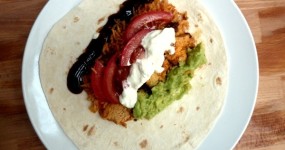 The quest for Mex part 2 – Feisty Chicken Burritos posted on December 21, 2010
The quest for Mex part 2 – Feisty Chicken Burritos posted on December 21, 2010 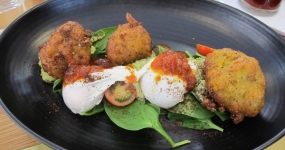 Lau’s Ultimate Corn Fritters and the four fritter truths posted on March 1, 2013
Lau’s Ultimate Corn Fritters and the four fritter truths posted on March 1, 2013  Café Review – Petty Cash Cafe, Marrickville posted on May 31, 2011
Café Review – Petty Cash Cafe, Marrickville posted on May 31, 2011  Salat Hatzilim posted on January 28, 2011
Salat Hatzilim posted on January 28, 2011
Disclaimer:
All opinions in this blog are mine, an everyday, real-life person. I do not accept payment for reviews and nor do I write sponsored posts. I do not endorse the content of the comments herein.

